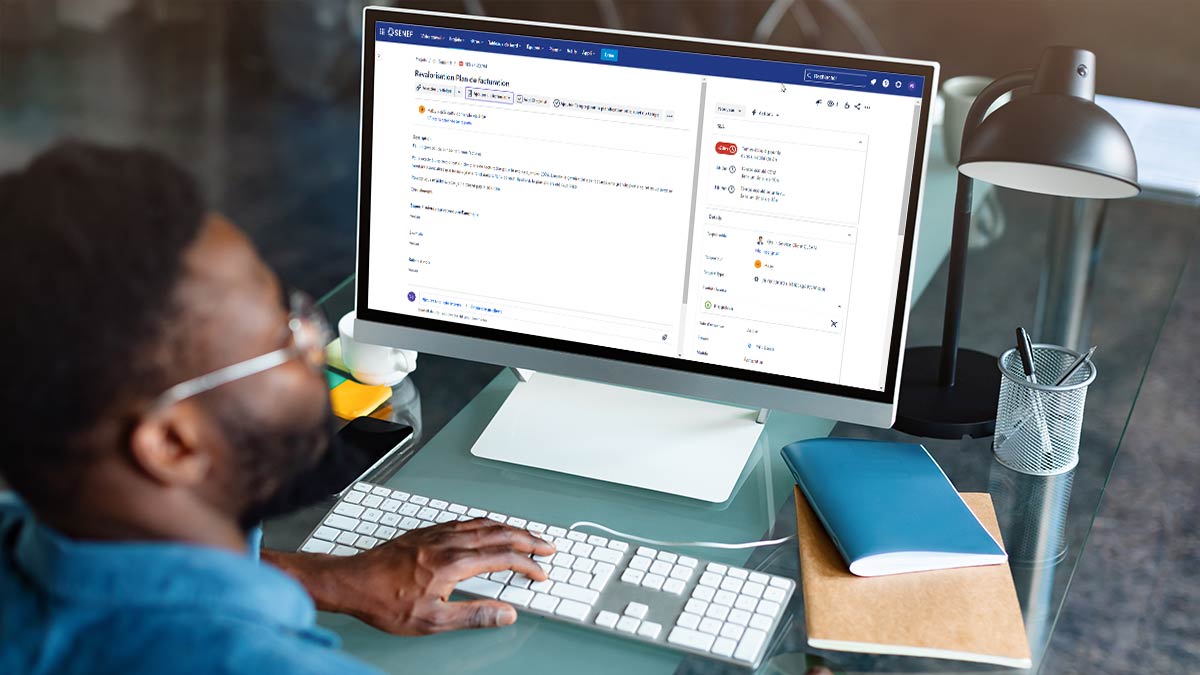Customer satisfaction is at the heart of any successful business. In a world where customer expectations are constantly evolving, it is essential to put in place effective solutions to meet their needs. Ticket management is essential for tracking customer requests.
Why ticket management is essential for tracking customer requests
In this article, we’ll explore why ticket management has become a cornerstone in tracking customer requests. After all, it offers tangible benefits for the customer experience.
“Satisfaction, a key element in a company’s longevity, is largely based on the effective management of customer requests.”
Did you know that 75% of customers who contact customer support expect a high degree of consistency in their response, according to Salesforce. Customers consider speed of problem resolution to be the most important factor in a positive customer experience.
Ticket management: what is it?
Ticket management has become essential for tracking requests. It’s a structured approach to handling customer requests. Each request is assigned to a “ticket”, a digital file, which allows clear follow-up and efficient resolution. PROGISAP, with its Mobisap application, has adopted this method to maximise customer satisfaction.
There are several ticketing tools commonly used by software company support departments. These tools are designed to facilitate the management of support requests. This means tracking problems, communicating with customers and improving support processes.
Which ticketing tools make it easier to manage tickets?
Here are some of the popular tools in this category:
- JIRA Service Management: formerly known as JIRA Service Desk. This is an IT service management solution from Atlassian. It offers ticketing, incident and problem management and request tracking capabilities.
- Zendesk: This is a customer service platform that includes a ticketing system. It allows you to manage support requests, automate support processes, and offers monitoring and reporting functions.
- Freshdesk: Freshdesk is a customer support solution that automates repetitive tasks and provides knowledge management functions. It also enables the creation of knowledge bases to help customers find answers themselves.
- ServiceNow: ServiceNow is an IT service management platform that includes ticketing functionalities for managing incidents, problems, changes and so on. It offers an integrated approach to service and process management.
- Desk.com : Desk.com, a Salesforce company, provides a customer support solution with a ticketing system, team collaboration features, and tools for tracking and resolving customer requests.
- Intercom: Intercom offers a customer messaging platform that includes ticketing functionalities. It enables support teams to manage conversations with customers and ensure appropriate follow-up.
The choice of a ticketing tool depends on the specific customer support needs of your human services business. But it also depends on the size of your team and the complexity of your processes. It’s important to select a tool that integrates well with your environment and offers the necessary functionality. With the aim of effectively managing support requests.
The benefits of ticket management, essential for follow-up
Companies that adopt ticket management systems see a 35% improvement in customer satisfaction over the long term. This increase is due to a deeper understanding of customer needs. This is the result of precise traceability of requests.
Companies that integrate ticket management methods observe a significant optimisation of these processes.
Resolution times are significantly reduced. This increased efficiency contributes directly to an improved customer experience, where expectations are not only met but often exceeded.
Ticket management also facilitates internal collaboration within the company.
The impact on customer satisfaction
Human services companies that adopt ticket management generally see an improvement in customer satisfaction. This can be explained by several key factors of this method. Firstly, the increased traceability of customer requests means that problems can be managed more transparently and efficiently.
Customers appreciate the visibility of the status of their requests. They can rest assured that their concerns are being taken into account.
In addition, the speed with which requests are handled is made possible by ticket management. This contributes to improved customer satisfaction. Data shows a reduction in resolution times compared with traditional methods. This efficiency translates directly into a smoother customer experience that is less subject to delays.
Finally, ticket management promotes more consistent and personalised communication with customers. Teams can track and respond to requests in a structured way, offering a more attentive customer service tailored to individual needs.
Our advice on implementing ticket management
Ticket management is much more than a method of tracking customer requests. It’s a winning strategy for improving customer satisfaction. It’s also a way of strengthening customer loyalty and positioning your company as a leader in its field.
Here are a few concrete examples of processes and rules for handling requests:
- Prioritising requests: a company can prioritise its requests according to the urgency and impact of the request. Urgent requests are dealt with first. These are followed by high-impact requests and then non-urgent requests.
- Determining who is responsible for the request: determining who is responsible for the request based on the type of request.
- Definition of resolution times: a company can define resolution times according to the type of request. For example, a company can define a 24-hour resolution time for urgent requests and a 72-hour resolution time for non-urgent requests.
- Communication with the customer: ticket management enables simplified communication with the customer. This means that requests can be tracked and resolved.
- Archiving requests: a company can archive requests in a ticket management system. Information relating to requests can be archived for a period of 5 years.
For each personal services company, the processes and rules for handling requests are adapted to the needs and context.
Jira, the essential ticketing tool for follow-up, used by PROGISAP
Managing requests by ticket, using ticketing tools such as JIRA, offers numerous advantages for customer relations and user and technical support for an ERP solution in SaaS (Software as a Service). Ticket management is essential for tracking requests.
Here are some of the major advantages
- Centralisation of requests: Tickets enable all user requests to be centralised within a single platform. This makes it easier to manage and track problems, questions and support requests.
- Traceability: Each ticket generated provides full traceability of the request. Including its history, comments and actions taken. This makes it easier to understand the evolution of a specific request.
- Prioritisation of tasks: ticketing systems allow you to define priority levels for each request. This helps our support teams (CSM) to identify and resolve critical or urgent problems first.
- Assigning responsibilities: Assigning tickets to team members means that responsibilities are clearly defined. Each ticket is assigned to a member according to their skills or workload.
- Time management: Tickets provide information about the time spent resolving each problem. This is useful for assessing performance, allocating resources efficiently and improving resolution times.
- Process automation: Jira makes it possible to automate certain tasks. For example, tickets can be assigned automatically according to predefined criteria, speeding up the handling process.
- Knowledge base: The creation of a knowledge base from resolved tickets can be used to quickly resolve similar problems in the future. Customers can also access this knowledge base to find solutions themselves.
- Measuring customer satisfaction: Some ticketing tools collect feedback from users on the resolution of tickets. This helps to measure customer satisfaction and identify areas for improvement.
- Reporting and analysis: Jira generally provides reporting and analysis functions, enabling you to track trends. But also to identify recurring problems and continually improve processes.
The benefits of Jira
Our Jira ticketing tool offers a structured, transparent and efficient approach to customer support. This improves the quality of the services provided while facilitating resource management and communication between teams and customers.
PROGISAP and Jira are powerful tools for improving customer satisfaction. By combining these solutions, companies can improve communication with their customers, resolve incidents more quickly and offer a more personalised customer experience. Ticket management is therefore essential for tracking customer requests.
PROGISAP will be happy to answer any questions you may have.





















